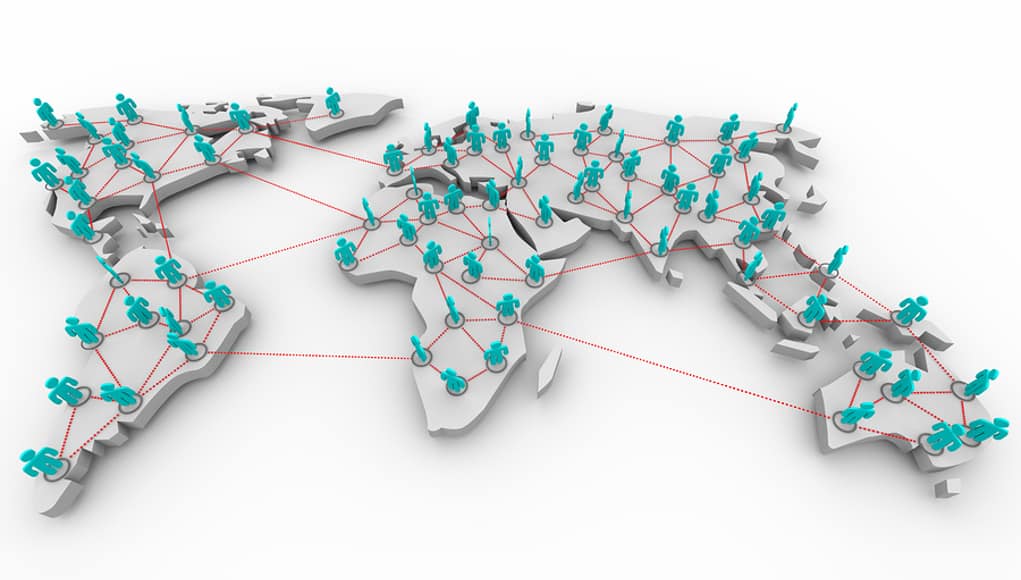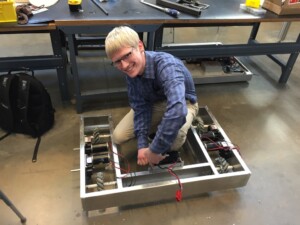Global Network Powers Management Education

Business is changing fast but MBA enrollments in the US are shrinking. How to stay relevant?
A group of top global business schools belong to a global alliance committed to educating and preparing future generations of international business leaders. The CEMS network serves 31 academic institutions and 100 corporate and social members.
In a quick chat with Executive Director Roland Siegers, we identified 10 distinctive features shared by the network.
- Globalism: Members work collectively to develop knowledge and provide education that is essential in the multilingual, multicultural and interconnected business world.
- Sustainability: Members are committed ethical and responsible approach to management education includes a strong focus on sustainability.
- Contribution: CEMS attracts values-driven students that want to contribute to the world that seems to be falling apart.
- Degree structure: Member schools offer the CEMS Masters in International Management. The one year degrees are great for tech undergrads who want to go into business.
- Partners: 73 multinational companies and seven social partners add relevance, support student consulting engagements, and expand career awareness.
- Personality 2.0: Learners gain an understanding of self and a confidence inspired by success in different environments.
- Non-traditional teaching: high engagement learning in and outside classrooms.
- Guidance: Students have a learning journey facilitator that helps make a good course, project, and work-based learning, and employment decisions.
- Mentors: Over 13,000 alumni of over 85 nationalities, working in more than 75 countries that deliver valuable career services and personal development opportunities to learners
- Jobs: CEMS alumni get work; 97% are employed (or continuing their studies), about three quarters for multinational companies and almost half live outside of their home country.
CEMS started with four European schools. They added one school per country. They may add a few in the US but don’t plan on getting much bigger.
Networks on the Rise
As outlined in our new book Better Together, networks are a great way for schools to differentiate themselves and add value for learners and instructors.
CEMS is a great example of schools that share a common degree, tools and resources. We call these diploma networks and believe they will be widely used to share the benefits of new outcome frameworks, personalized learning models, and support systems.
In addition to common learning goals, diploma networks often share signature experiences. At CEMS, it’s student consulting experience in the second term. For example, Swiss tech company ABB hosted a mega project with students from 11 countries working together on a single challenge. Together, CEMS students contribute more than 200,000 consulting hours per year
International Baccalaureate is a widely adopted diploma network in K-12. Building 21 is an innovative Philadelphia high school that spurred a competency-based high school diploma network.
Diploma networks add distinctiveness and value to a degree. At scale, they can become a powerful signaling mechanism to employers and postsecondary institutions. They add value to students, create opportunities to create to the network, and leverage R&D across the network.
CEMS was founded on principles that continue to grow in importance. “We embrace globalization,” said Siegers. “We’ve been training students to thrive in uncertainty for 29 years.”
This global network of business schools has avoided the slump experienced by many American MBA programs by holding fast to core principles and adding new features that benefit learners and members.
Siegers is proud of the intercultural skills students gain in the CEMS network. Going forward he’s listening to Alibaba founder Jack May’s encouragement that schools should double down on human skills–the stuff machines won’t do for a long time.
For more, see:
- 101 Top School and Charter Networks
- Better Together: How to Leverage School Networks for Smarter Personalized and Project Based Learning
- School Networks: Getting Beyond the Technical
This post was originally published on Forbes.
Stay in-the-know with all things EdTech and innovations in learning by signing up to receive the weekly Smart Update. This post includes mentions of a Getting Smart partner. For a full list of partners, affiliate organizations and all other disclosures, please see our Partner page.







0 Comments
Leave a Comment
Your email address will not be published. All fields are required.